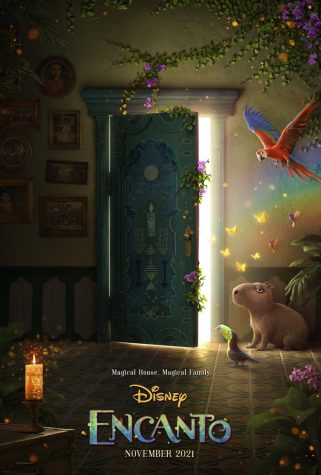Ori and the Blind Forest, an enthralling experience
Introduction:

From Moon Studios—an independent video-game development company based in Vienna, Austria—and Microsoft production studios comes Ori and the Blind Forest, a game which won the Best Debut award at the 2016 Game Developers Choice Awards. Ori and the Blind Forest is a 2D platformer game whose storyline, according to its creators, was inspired by The Lion King and The Iron Giant, with its gameplay inspired by the Rayman and Metroid franchises. According to the official website, “At Moon Studios, [they] all grew up playing games like Super Metroid, Zelda: A Link to the Past, etc. and with Ori, [they] wanted to recapture the magic of these games.”
Summary:

In Ori and the Blind Forest, the Spirit Tree — a giant mystical entity that is guardian of the forests of Nibel and maintains the balance of the “Elements of Light” — narrates the story of Ori, a small guardian spirit. Ori is the “child” of the Spirit Tree, and on one fateful night Ori is taken away from him in a storm. Ori is found by a creature named Naru, who treats Ori as if he were her own child.
After some time passes, Ori’s absence leads to the Spirit Tree losing his power and, subsequently, the decay of the rest of the forest. Ori leaves his home, but, he quickly grows weak and collapses; the spot where Ori ends up happens to be in front of the Spirit Tree. The Tree uses the last of its strength to revive Ori (see the image below), who then continues on his way. Eventually, Ori meets a fairy-like creature named Sein, who is the “light and eyes” of the Spirit Tree. It tells Ori about how the Spirit Tree died. The short version is that Sein was taken away from the Spirit tree by Kuro, an enormous owl that wants revenge on the Spirit Tree’s light.
Together, Ori and Sein go on a quest to restore the Elements of Light, which would revitalize the Spirit Tree, and, consequently, the forest as well. To reveal any more about the game would lead into spoilers, and really, this is a game that must be experienced first hand to be fully appreciated. It is beautifully designed with an emotionally compelling storyline, not to mention an amazing soundtrack.
Gameplay:

Ori is a fun character to watch and control. His movements always feel natural and smooth. However, certain mechanics of the game can be a bit irritating: holding down the spacebar longer makes Ori jump higher, a dynamic I found it frustrating when trying to wall jump over obstacles that fire projectiles and deal damage to Ori when he comes into physical contact with the obstacle itself.
As a platformer, the hold-for-higher-jump mechanic makes sense, but it can be extremely difficult to master. Still, this makes the game more challenging and, subsequently, more fun to play; it wouldn’t be fun if it were too easy.
Ori is learning and adapting constantly. As you play the game and gain experience points, you can level up his basic aspects, and you can uncover hidden secrets that give you new powers. This guarantees that Ori is never stuck with the same base abilities, a common sight in most platformers.
Despite Ori’s various abilities, certain skills tend to grow repetitious or seemingly ineffective; take Ori’s base ability of using Sein to attack, called Spirit Flame. At first, it appears to be an effective way of dealing with your enemies. But as the enemies level up, they have to take more damage to be defeated, and while it’s usually a good idea to have the enemies consistently grow more difficult as the player grows stronger, Spirit Flame becomes repetitive and boring. Thankfully, just as the player gets bored with the attack, Ori learns how to launch himself off of enemies, sending them flying in opposite direction. Ori continues learning more and more moves keeping the gameplay fun and fresh.
One of the best features of the game is its Soul Link ability. The player can spend one of Ori’s energy points to create a ‘save point’ almost anywhere or use the energy point to attack enemies, so the decision to save or to attack is purely a tactical one made by the player. This a unique take on the save point mechanic; it allows the player to save before and/or after a tough obstacle, but at the cost of using the few energy points Ori has.
I think the game scores an 8 out of 10 for gameplay. The game is phenomenal, but does have some flaws that go with the platformer territory.
Moon Studios released a Ori and the Blind Forest: Definitive Edition, which added extra gameplay elements,one example being that Ori can teleport across the massive map to and from certain locations called Spirit Wells.
Visuals:

From the moment the game starts, the player is greeted by stunning visuals. Ori has gorgeous landscapes, and one of best parts is that objects aren’t just copied and pasted as needed. When you see an object—take a rock formation, for example—that’s the only place you will see rocks shaped like that. There might be another, similar-looking rock formation elsewhere, but it’s never the same exact one as before because the creators designed each element individually. The amount of dedication that went into making this game is astounding.
The environment is constantly changing, both in scenery and in the physical interactive setting. At one point, you have to jump over dangerous, thorny vines. The next, you have to dodge swinging spiked maces, and then you have to push a block through the maces while trying to avoid taking damage. The game always builds expertly on top of itself so the player doesn’t get bored with a repetitious obstacle course.
At the beginning, during the storm, the forest is dark and scary, but Ori’s presence is calm and comforting. After the storm, the forest is resplendent, with bright fruit trees and lush green trees, but as the forest dies, the trees turn dark and sad, with dying leaves and no fruit. Furthermore, as the game progresses, you can see differences in the levels that help each one distinguish itself from the others without being too contrasting.
The character animation is just as smooth and elegant. Unlike many platformers, Ori isn’t always moving the same way; sometimes, as he jumps, he does a simple leap, while, other times, he does a front or back flip. And Sein doesn’t stay in one spot; rather, he gracefully moves around Ori, adapting to the environment without being distracting. The game’s animation quality makes it seem like you’re playing through cutscenes because of how smooth everything runs and behaves in the environment.
However, every game has its flaws, and unfortunately that holds true for Ori and the Blind Forest. At times visual glitches like enemies hitboxes can be seen for a brief second. The glitches do not in anyway detract from gameplay, but they can be somewhat distracting when an enemy is seemingly detached and floating around the environment due to the solid square behind them for a moment.
As far as visuals go, this game would rank 9 out of 10, with the point taken off for the aforementioned visual glitches. Yet Ori and the Blind Forest: Definitive Edition remedied these small visual problems.
Sound:
The soundtrack is just as delightful as the visuals, and it does an incredible job helping tell the story. For example, in the scene where Ori is taken away from the Spirit Tree, the score is sorrowful, yet has a hopeful undertone as Ori passes Naru just before landing. The music does a powerful job of capturing the emotion of each scene and event, as well as expressing the anger of Kuro and the innocence of Ori.
The sound effects create an awesome effect within the game, especially the scenes with Koru chasing Ori. Everything makes a sound in the Blind Forest, from every step Ori takes, to the moving obstacles, and yet there’s never too much noise to become overwhelming. No sound seems out of place either; they all work together to create a believable atmosphere for the forest. The soundtrack and sound effects score a 10 out of 10. Both are full of fantastic music and do an incredibly storytelling job as well as giving a well-rounded environment.
Overall:
With a storyline based on both movie and videogame classics, beautiful visuals and an incredible soundtrack, this is a refreshing game in a world full of mainstream games with no storylines and basic animations, like the recent successful franchise of Five Nights at Freddy’s. You aren’t just gaping in astoundment at its scenes (well, not all the time) because you’re also busy just having fun playing as Ori, doing jumps and flips to surmount obstacles. It is a must-play for gaming enthusiasts because of its superb gameplay, stunning visuals and a spectacular soundtrack. If you’re interested in playing the game or would like to see some of the aforementioned visuals in action, here is Moon Studios launch trailer.







Crystal Sung • May 27, 2016 at 2:07 pm
Just in time to read this!